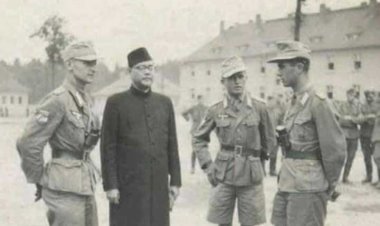World War I, often known as the First World War or the Great War, was an international struggle that engulfed the majority of the European countries, as well as Russia, the United States, the Middle East, and other regions, between 1914 and 1918. The war opposed the Allies—primarily France, Great Britain, Russia, Italy, Japan, and, starting in 1917, the United States—against the Central Powers—primarily Germany, Austria-Hungary, and Turkey. The Central Powers were defeated at its conclusion. The conflict was essentially unheard of in the slaughter, carnage, and destruction it caused.
Here are some facts about the same
1. On July 28, 1914, Austria-Hungary formally declared war on Serbia.
What began with one had a domino effect on the entire alliance structure. Russia assembling its troops was seen by Germany as a declaration of war.
2. On July 5, 1914, Wilhelm obliquely expressed his support.
The dual monarchy was given a "blank check" or "carte blanche" as a guarantee of Germany's support throughout the war.
3. Balkan issues lingered throughout the conflict.
Even the existing accords that supported the alliances of the European powers and other alliances were in jeopardy due to their political challenges.
4. A week later, alliances had already been established.
Serbia, Russia, the United Kingdom, Belgium, and France joined forces with Austria-Hungary and Germany to start World War I in under one week.
5. The Central Powers and the Allied Powers were at war.
Austria-Hungary, Germany, Bulgaria, and the Ottoman Empire made up the Central Powers. On the other hand, the Allied Powers were created by Great Britain, Russia, France, Romania, Italy, Japan, and the United States.
6. The Schlieffen Plan guided the Central Powers' operations.
The aggressive military tactic, named for its instigator, German Field Marshal Alfred von Schlieffen, had expectations of a fast triumph. Nonetheless, it resulted in a more drawn-out and demanding conflict.
7. Germany entered World War I quickly and engaged on two fronts.
They attacked Russia in the east while invading France through Belgium in the west.
8. On August 4, 1914, German forces entered into Belgian territory.
When they proceeded to France through Belgium, their arrival ignited the first combat of World War I, murdering and destroying everything in their path.
9. Liege was taken by Germany on August 15, 1914.
Using their most potent weaponry, the soldiers charged in full force. They used massive siege guns to successfully breach Liege's walls.
10. Late in August 1914, the Battle of Tannenberg got underway.
On the other side, the Eastern Front of World War One saw the Russian invasion of Poland and East Prussia. German and Austrian armies stopped attacking the areas under German control.
One of the major turning points in 20th-century global history was World War I. The Bolshevik Revolution in Russia, the overthrow of four powerful imperial dynasties (in Germany, Russia, Austria-Hungary, and Turkey), and the subsequent instability of European society all contributed to the outbreak of World War II.

 Like
0
Like
0
 Dislike
0
Dislike
0
 Love
0
Love
0
 Funny
0
Funny
0
 Angry
0
Angry
0
 Sad
0
Sad
0
 Wow
0
Wow
0
































































































































































